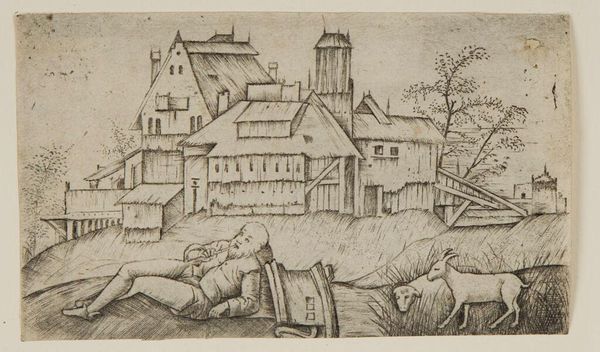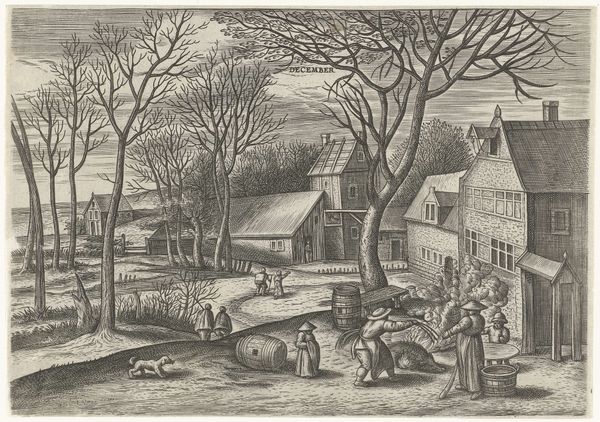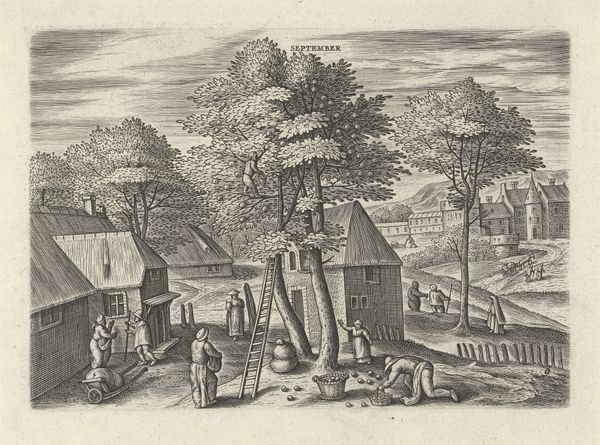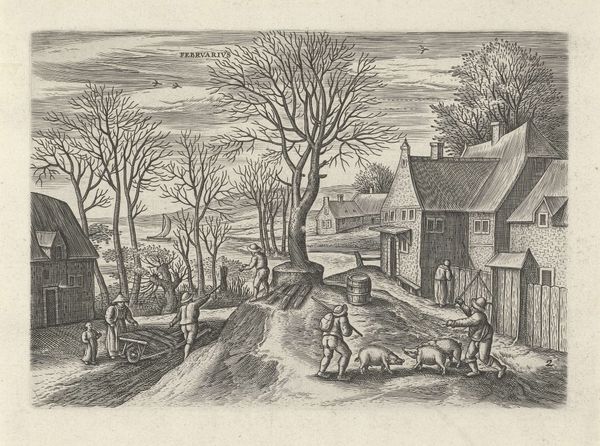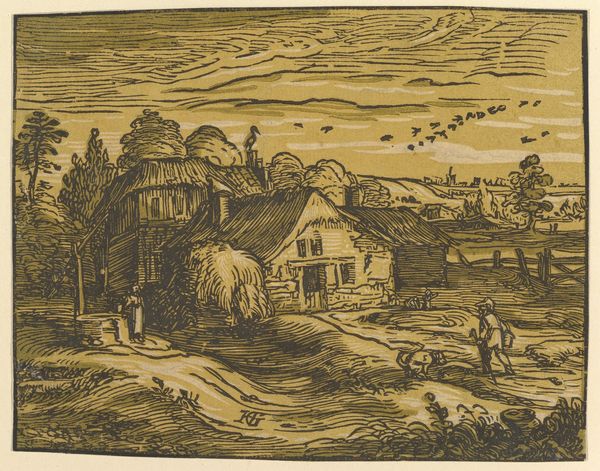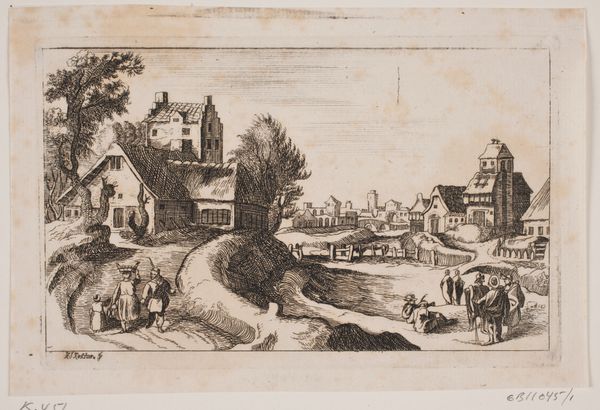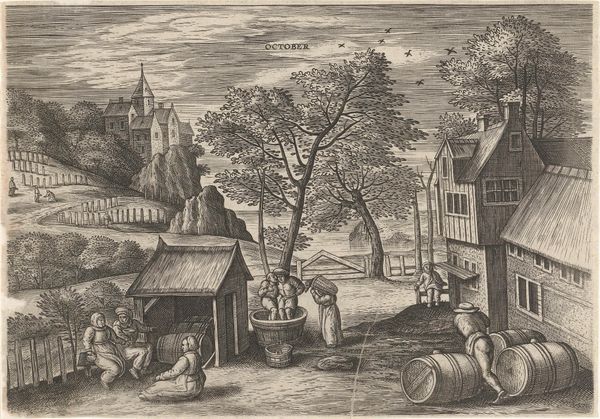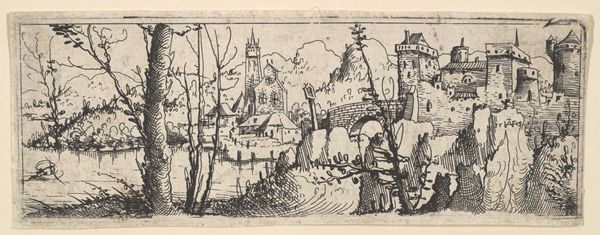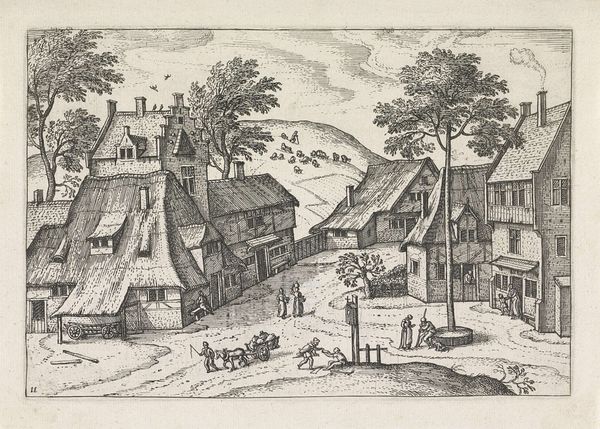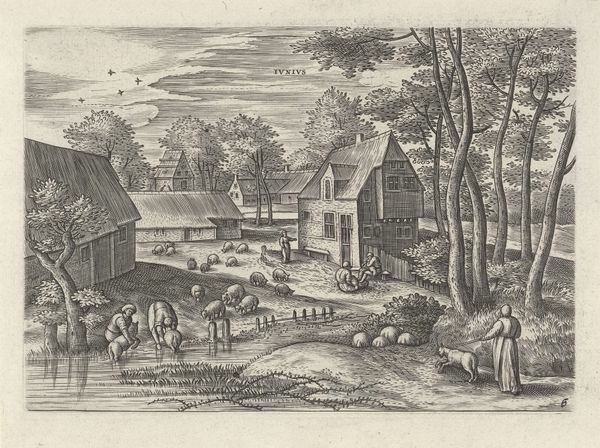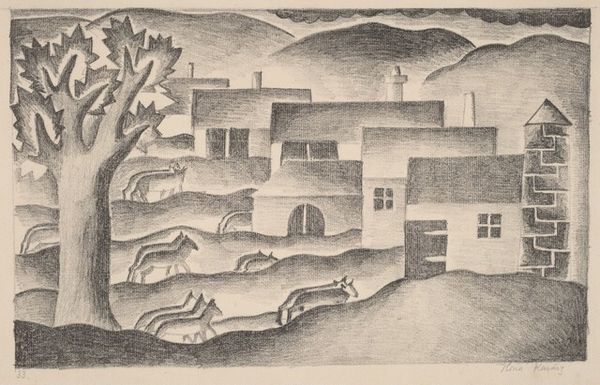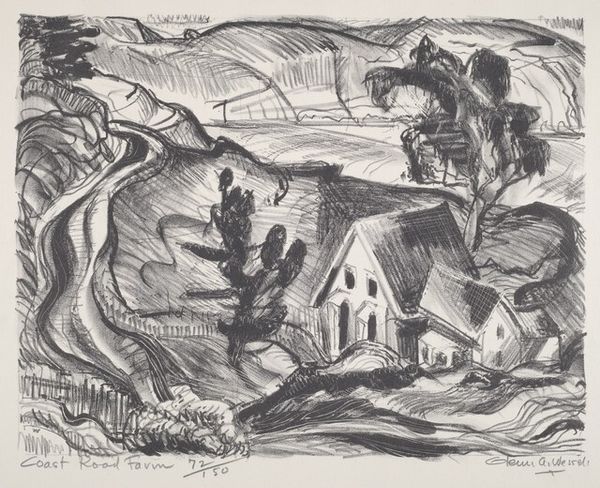
The old shepherd lying in a landscape, buildings behind, a goat and a sheep to the left 1500 - 1515
0:00
0:00
drawing, print, etching
#
drawing
# print
#
etching
#
landscape
#
figuration
#
genre-painting
#
italian-renaissance
Dimensions: Sheet: 3 1/8 × 5 5/16 in. (8 × 13.5 cm)
Copyright: Public Domain
Curator: Immediately, I'm struck by this incredibly detailed rendering, like an otherworldly, sun-drenched dream. What is it about this that pulls you in? Editor: This artwork, entitled "The Old Shepherd Lying in a Landscape," dates from around 1500 to 1515, an etching attributed to Giulio Campagnola. Currently, it resides here at The Met. Curator: An etching… ah, you see that explains the mood. The density of the cross-hatching and the stark tonal range gives the composition an oddly unsettling feeling, despite the pastoral scene. The shepherd's figure looks… isolated, almost. Editor: Isolation, yes, I perceive that as well, although pastoral scenes were very common then. The figure of the shepherd resonates deeply, tapping into very old cultural narratives. Shepherds have, since antiquity, been symbols of moral guidance, piety, the divine will shepherding humanity, so the image resonates powerfully on a symbolic level. I find myself wondering whether that building isn’t a contemporary, for then, take on the temple. Curator: You know, it's interesting that you see those links because for me, even while seeing how shepherds evoke these classical allegories and religious meanings, he just seems so bored. And that pipe is an attribute that is also often a substitute for, erm, phallus. Do you think Campagnola sought to challenge idealized notions of Renaissance man? Editor: Challenge or… humanize? I appreciate your perception, this is just an etching on paper, after all, and easily misconstrued. It would not have been seen in a big public display necessarily. Perhaps Campagnola wished to evoke both our earthly and aspirational selves, the pipe offering a nod to the earthly. I like that tension and playful use of iconography. Curator: That really makes me rethink my initial interpretation. Now that you’ve explained Campagnola's approach to these common iconographic emblems, there's a refreshing sincerity. The whole is an amazing distillation of thought. Editor: Indeed. There's a beauty and depth here that resonates across centuries.
Comments
No comments
Be the first to comment and join the conversation on the ultimate creative platform.
